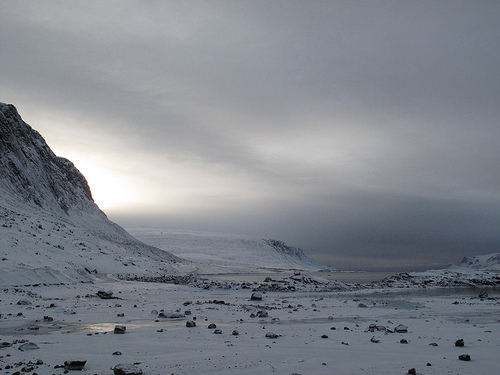By Joe Johnson (The Cascade) – Email
Print Edition: June 6, 2012
It’s called “devolution” and our territories north of the 60th parallel are working hard at it. Depending on their level of development, they could potentially obtain a province-like autonomy and fiscal control of their land. But it’s much more than gaining independence from the federal government that they are looking for.
Historically, the tale of the territories is very much Canadian. In 1870, three years after the country came into its own through confederation Canada bought the territorial land (the North-Western Territory as well as Rupert’s Land) from the Hudson’s Bay Company. A decade later more land would be added as the British government conceded the Arctic Islands. Together this land was much vaster than today’s three territories, and stretched south into areas that would later to be divided into provinces. The north remained, and as granting territorial status is a simpler act than creating a province—done through Parliament rather than amending the constitution—the three territories were created: the Northwest Territories in 1870, the Yukon in 1898 and Nunavut in 1999.
The main defining factor of a territory is the dependence they place on the federal government. In the wording of the Intergovernmental Affairs website, while “provinces exercise constitutional powers in their own right, the territories exercise delegated powers under the authority of the Parliament of Canada.” Notably, the provinces have autonomy over their natural resources while the territories do not.
According to Hamish Telford, a UFV Political Science professor, “What makes the territories fundamentally different from the provinces is that the provinces derive revenue from natural resources. So when oil is taken out of the ground in Alberta, the government of Alberta collects a royalty. But when diamonds are mined in the Northwest Territories, the royalties go to the government of Canada – not to the territorial government.”
What the territories do get in exchange for the royalties, though, is revenue back in the way of transfer payments calculated through the Territorial Formula Financing program. Essentially, it’s enough money given to the territories above what they are expected to generate themselves in order to provide services for their people.
Since their beginnings the territories have always been second to the provinces. However, the capacity exists for them to become official provinces. If it were to happen it would require the consent of at least seven provinces and 50 per cent of the population, and an amendment to the constitution. The reality of it though, according Telford, is that the pieces to become full province just aren’t there.
The problems facing the territories in being able to sustain themselves without the assistance of the federal government include a low and sparse population, lack of educational institutions, a limited skilled workforce, aboriginal land claims in the Northwest Territories and Yukon, and economic development in Nunavut. This is in addition to direct concerns of “poverty, unemployment, addiction, suicide, etc.” according to Telford.
Together, the territories comprise roughly 40 per cent of the landmass of Canada, yet hold very little of its population. Telford commented, “We have to really consciously think about the population. The population of the three territories combined is about half that of Abbotsford. We’re talking about 75,000 people up there in three territories, there’s a massive territorial area.”
So instead of making the move to a full province, it’s devolution that they want. It would bring them closer to provincehood, in terms of retaining royalties, without actually having to give up some of their benefits of being a territory – namely the transfer payments.
In the 2012-2013 year the provinces will receive $3.1 billion from the federal government.
Telford commented on where the territories are at with their devolution, “The Yukon has made some progress in negotiating that with the federal government, Northwest Territories is further behind, and Nunavut’s way behind in that respect.”
Many changes have already occurred, though, such that there is now “a legislative assembly and executive council for each territory.” But the negotiations are almost always towards the economies.
Not moving towards absolute provincehood is something that the federal government is in an unsaid agreement with. During past negotiations with the Northwest Territories and Yukon, it was implied that the federal government wouldn’t want to give up their influence. The same should be true with the upcoming negotiations with Nunavut. The Harper government deems the north to be part of a strategic defence and will be key in retaining control of Canadian sovereignty in the contested waters. Of course, they also would like to keep access to the resource royalties.
Telford explained that it’s also the other provinces that “wouldn’t welcome them as full provinces. It changes the underpinnings of the Canadian constitution, and to bring in three new provinces sort of upsets the balance of power, if you will, that already exists between the provinces.”
In the end, it’s all about the economic negotiations and not about an idea of provincehood. Highlighted by Telford, it’s something that the federal government, other provinces, and “the territories don’t even want. You know, if the territories decided it was something they wanted, it would at least force the conversation. But it’s not in the cards for any of the territorial governments.”


